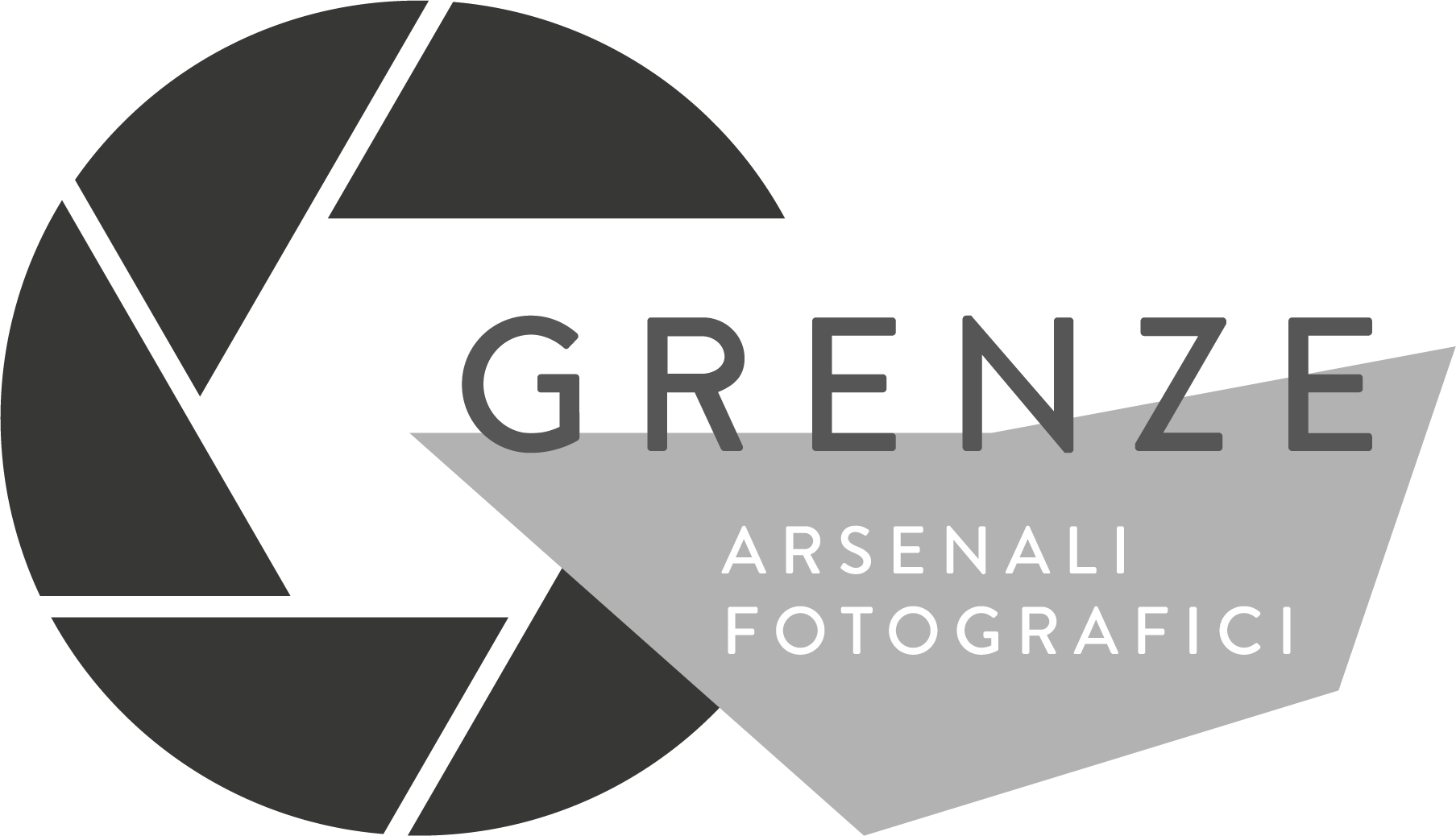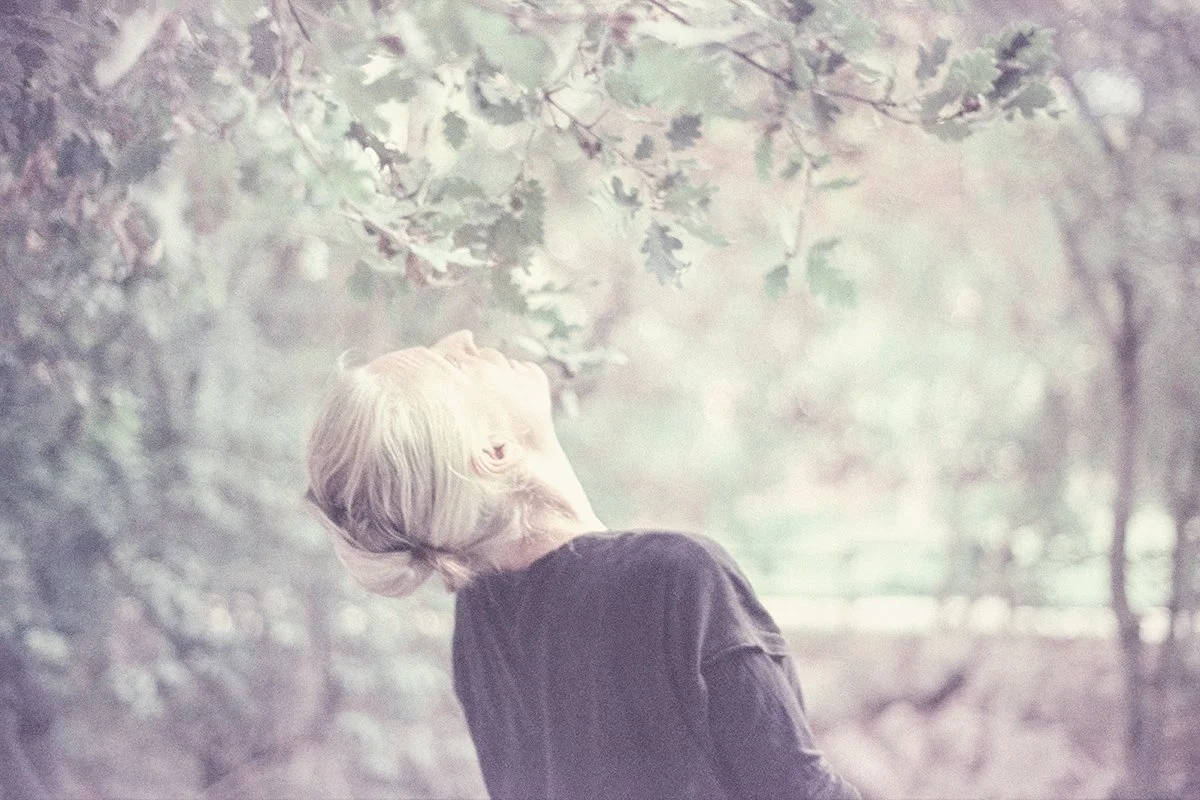EIDOLONS
Eidolons is a photographic work about perception, impermanence and memory. In ancient Greek, eidolon means ghost, image, simulacrum. Each photograph reveals itself as the radiance of a fleeting and magical moment.
In connection with visual disorders, photographer Frédérique Dimarco aims to develop a tension between appearance and disappearance. It is about awakening our eyes to the vulnerability of the world in which we live, and capturing just for a moment our connection to the elements and to the living.
Her ophthalmological pathology is characterized by extreme sensitivity to light (photophobia), visual fatigue and instability. The specificity of her vision is fundamental to her search for blur, overexposure, erasure, chromatic drift and artifact.
The deliberate use of expired films allows for this drifting of renderings and the development of an aesthetic of the ephemeral. It also leaves room for randomness. Mental images, sensations and spectral visions follow one another in an atmosphere of immateriality. The author does not illustrate her troubles, but rather transposes them sensitively.
Out of time and space, Eidolons sublimates in a gentle, poetic way the ceaseless ballet of beings and elements on the surface of the Earth. The narrative wanders, echoing the roaming of the gaze. The living and the non-living are closely connected, life and death intimately linked.
These delicate images with their indecisive contours give substance to the invisible, in the form of simulacra taken from the flow of time. This sensitive connection to the world reconciles us with the fragility of life and helps us to find a balance, however precarious it may be.
“The installation seeks a form that reconciles the photographic medium with the sense of sight: to rediscover the contours and framing of vision while preserving the image as a field for perceptual exploration. The frame, reminiscent of a slide mount, contains what would otherwise escape us. And this “cropping” reveals the world to us only partially — because human vision is partial.
Yet within the limits of the frame, we gain access to another kind of totality: the optical unconscious, the resurfacing — beneath the photographic eyelid — of what we have already seen, of what lay beyond Alice’s mirror.
In the amniotic fluid, in the image of the “tanks,” a new, fragile visual entity is born.
I see what slips away precisely through the blur. Like a ghost, what appears also disappears. Trauma heals.”
Francesca Marra
Frédérique Dimarco is a photographer who lives and works in Aix-en-Provence. At the age of 16, she began training in photographic processes and in the analog laboratory. Later, affected by neuro-ophthalmological disorders, she drew away from her practice for several years. Then, photography became an invaluable means of reconciling herself with the sense of sight. The question of vision and the impermanence of things is at the heart of her artistic reflections.
Since 2004, her work has been shown in France and abroad, notably at the Galerie du Studio Baxton (Brussels), the Itinéraires des Photographes Voyageurs festival (Bordeaux), the Maison des Photographes (Paris), Maupetit côté Galerie (Marseille), the Festival Internacional de Fotografia Fotoarica (Arica, Chile) and the Museo de Arte Contemporaneo (Maracaïbo, Venezuela).
She published the photographic work Le tendre espace with Arnaud Bizalion Éditeur in 2019. Her new book Eidolons was published in February 2025 by the same publisher.
www.frederiquedimarco.com
@dimarcofrederique
EIDOLONS
Eidolons è un’opera fotografica che esplora la percezione, l’impermanenza e la memoria. In greco antico, eidolon significa fantasma, immagine, simulacro. Ogni fotografia si rivela come il bagliore di un istante fugace e magico.
In relazione ai disturbi visivi, la fotografa Frédérique Dimarco mira a sviluppare una tensione tra apparizione e scomparsa. Si tratta di risvegliare i nostri occhi alla vulnerabilità del mondo in cui viviamo e di catturare, anche solo per un momento, il nostro legame con gli elementi e con il vivente.
La sua patologia oftalmologica è caratterizzata da un’estrema sensibilità alla luce (fotofobia), affaticamento visivo e instabilità. La specificità del suo modo di vedere è fondamentale nella sua ricerca di sfocature, sovraesposizioni, cancellazioni, derive cromatiche e artefatti.
L’uso deliberato di pellicole scadute consente questa deriva dei risultati e lo sviluppo di un’estetica dell’effimero. Lascia inoltre spazio al caso. Immagini mentali, sensazioni e visioni spettrali si susseguono in un’atmosfera di immaterialità. L’autrice non illustra i suoi disturbi, ma li trasporta sul piano sensibile.
Fuori dal tempo e dallo spazio, Eidolons sublima in modo delicato e poetico il balletto incessante degli esseri e degli elementi sulla superficie della Terra. Il racconto vaga, facendo eco all’errare dello sguardo. Il vivente e il non-vivente sono strettamente connessi, la vita e la morte intimamente legate.
Queste immagini delicate dai contorni indecisi danno forma all’invisibile, sotto forma di simulacri sottratti al fluire del tempo. Questo legame sensibile con il mondo ci riconcilia con la fragilità della vita e ci aiuta a ritrovare un equilibrio, per quanto precario esso sia.
“L'allestimento cerca la forma per riconciliare il medium fotografico con il senso della vista: ritrovare i contorni e la cornice dello sguardo mantendendo l'immagine come campo di esplorazione della percezione. La cornice, simile ad un telaietto per diapositive, contiene ciò che altrimenti ci sfuggirebbe. E questo “ritaglio” ci mostra il mondo in modo parziale. Perché la visione dell'essere umano è parziale.
Nei limiti della cornice possiamo tuttavia accedere ad un'altra totalità: l'inconscio ottico, il riaffiorare sotto la palbebra fotografica di ciò che abbiamo già visto in passato, ciò che stava oltre lo specchio di Alice.
Nel liquido amniotico, nell'immagine delle “vasche” nasce una nuova entità visiva, fragile.
Vedo ciò che sfugge proprio attraverso la sfocatura. E' come un fantasma, ciò che appare dis-appare. Il trauma guarisce.”
Francesca Marra
Frédérique Dimarco è una fotografa che vive e lavora ad Aix-en-Provence. All’età di 16 anni ha iniziato la sua formazione nei processi fotografici e nel laboratorio analogico. In seguito, colpita da disturbi neuro-oftalmologici, si è allontanata dalla pratica fotografica per diversi anni. Successivamente, la fotografia è diventata per lei un mezzo prezioso per riconciliarsi con il senso della vista. La questione della visione e dell’impermanenza delle cose è al centro delle sue riflessioni artistiche.
Dal 2004, il suo lavoro è stato esposto in Francia e all’estero, in particolare presso la Galerie du Studio Baxton (Bruxelles), il festival Itinéraires des Photographes Voyageurs (Bordeaux), la Maison des Photographes (Parigi), Maupetit côté Galerie (Marsiglia), il Festival Internacional de Fotografía Fotoarica (Arica, Cile) e il Museo de Arte Contemporáneo (Maracaibo, Venezuela).
Nel 2019 ha pubblicato l’opera fotografica Le tendre espace con Arnaud Bizalion Éditeur. Il suo nuovo libro Eidolons è stato pubblicato nel febbraio 2025 dallo stesso editore.
www.frederiquedimarco.com
@dimarcofrederique


